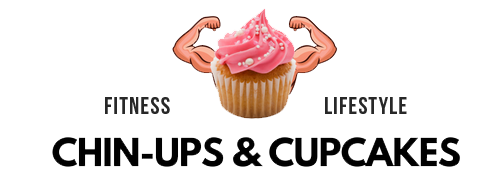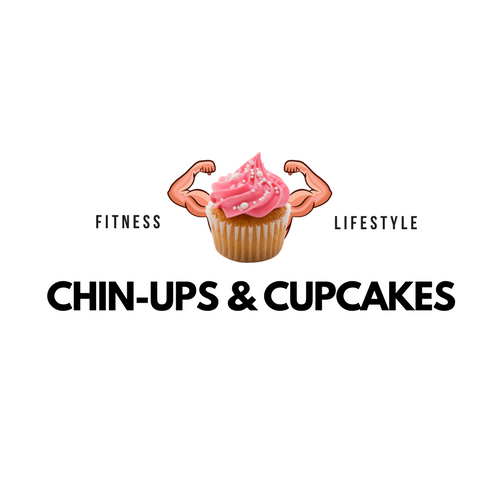
Anatomy of
The Anatomy of Chin-ups
It’s recently come to my attention that I’ve never given you a step-by-step on the “how to” for chin-ups! I received questions from several of you about it after an Instagram post the other day. With that being said, I thought this would be the perfect time for part 3 of the “Anatomy of” series… “The Anatomy of Chin-ups.”
What are Chin-ups?
Compared to many other exercises, chin-ups are relatively simple. I said, simple, as in easily understood… not easy. So, what is a chin-up? A chin-up requires you to hang with an underhand grip and your elbows fully extended. Your full body weight is in your grip as you pull yourself up until your chin is over the bar. Lower yourself down, back to the starting position and you have your first rep! Don’t be fooled. Although it sounds easy, they are one of the most difficult exercises to complete, especially for women. You should be extremely proud of yourself if you can do them!
Primary Muscles
Chin-ups are a foundational mass-building exercise. They increase grip strength and core strength as well. They primarily work the Latissimus Dorsi, or lats, as they’re often referred to. This is the broadest muscle of the back extending from under the arms all the way down to the hips. It’s responsible for pulling the arms down and in. In the bodybuilding community, they’re known as “wings”. Along with the lats, the other primary muscle worked by chin-ups are the biceps. This is the “flex” muscle of our arms, or the “guns”. Biceps are responsible for flexing the elbow and supination (turning palms upward) of the forearm.
Secondary Muscles
Along with sculpting the back and biceps, chin-ups hit several secondary muscles as well. The lower traps, which initiate the pulling movement. The Pectoralis Major, our chest muscle, is activated at the beginning of the exercise. The rhomboids retract (draw in) the scapula as the Teres Major assists the lats. Several “core” muscles are also used in the movement including the erector spinae (support spine and torso rotation), external obliques (largest, superficial core musculature that aids in lateral flexion ‘side bending’ and intra abdominal pressure for core support) and mostly the Rectus Abdominis (the ‘six pack” abs muscle that keep our body from swinging during the chin-up.
How?
Now you know what they are, how to do them and what they work. The question becomes, how do you work up to it? That’s the question I’ve heard the most often. There are several exercises that you can do! Lat pulldowns will strengthen your lats BUT they will not help you as much because they don’t train your body to pull up, but down. It will take you some time. It’s not something that you can rush. So, here’s an 8 week progression that you can try!
Chin-up Progression
Weeks 1-4
- Isometric (constant tension) Chin-up: Use a box to help get yourself to the top of the movement (chin over bar). Hold your bodyweight for as long as possible in that position. This will keep constant tension on the muscles, therefore building strength. Do 3 sets and hold for 5 to 30 seconds.
- Suspended Chin-up: This will require you to set yourself directly under a bar (in the smith machine or squat rack) or under a TRX, enough so that you’re completely underneath it. You can use your feet as much as you have to but try to put as much of the work in your arms and back as possible. You’re simply mimicking a chin-up. Do 3 sets of 8-10 reps.
Weeks 5-8
- Eccentric Chin-up: This is the lowering phase of the movement. Again you want to start at the top of the movement (chin over bar) and focus on lowering your body weight as slowly as possible. You’ll want to do 3 sets of 5 reps.
- Band-Assisted Chin-up: For this exercise you’ll need a workout band to loop over the bar. You’ll put your knee in it, and assume the chin-up position. Begin to pull from a dead hang, and when you get to the sticking point the band will assist you the rest of the way. Do 3 sets of 5-10 reps.
Conclusion
If you have any questions at all, please feel free to ask! This is by far my favorite goal to help my clients reach. You can do the exercises above up to 3 times per week. At the beginning you WILL feel sore. Ensure you’re practicing full range of motion. A full chin-up starts from full extension of the elbows. Don’t cheat yourself! The exercise progression above is the most efficient way to learn, but extra back and bicep exercises will help too (Just make sure you do those listed above before any accessory exercises.) You can do Cable Pulldowns, Bent over Dumbbell Rows, cable curls and dumbbell curls. The most important thing to remember is practice makes perfect! Be consistent.
Let me know if you try it out! Thanks for reading.
Need help building a workout plan? Click HERE.
Until next time…







0 comments